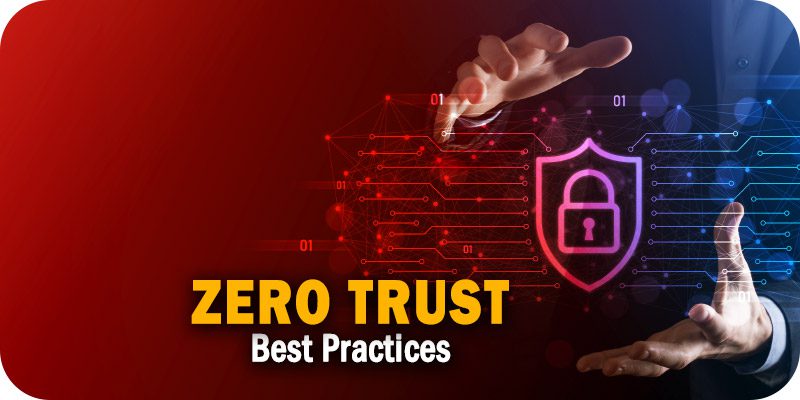10 Zero Trust Best Practices to Consider in 2023


The editors at Solutions Review team up with ManageEngine to discuss zero trust best practices enterprises should consider in their strategy.
Zero Trust is a security model that requires all users, devices, and applications to be authenticated, authorized, and continuously verified before being granted access to resources. This approach assumes that any user, device, or application attempting to access resources is untrusted until proven otherwise. Zero Trust is critical to enterprise security because it provides a comprehensive security model that can effectively protect against advanced cyber threats. The traditional perimeter-based security approach assumes that anything inside the network is safe, while anything outside is a threat. However, this model has been proven ineffective against modern threats from within the network. Zero Trust, conversely, assumes that all network traffic and users are untrusted and must be authenticated, authorized, and continuously verified before being granted access to resources.
This approach reduces the attack surface, limits lateral movement, and ensures that only authorized users and devices can access critical resources. It also provides real-time monitoring and analytics to detect and respond to any abnormal behavior, thus preventing potential security breaches. Additionally, Zero Trust requires the implementation of robust identity and access management, network segmentation, encryption, secure access controls, and endpoint security solutions. These measures collectively provide a more comprehensive security posture, protecting against various cyber threats such as phishing, malware, and data exfiltration.
10 Zero Trust Best Practices to Consider
Here are some best practices for implementing Zero Trust:
- Identity and Access Management: Implement a robust Identity and Access Management (IAM) solution to manage user authentication and authorization, including multi-factor authentication (MFA) and least privilege access.
- Network segmentation: Segment your network to reduce the attack surface and limit lateral movement by isolating critical assets and creating micro-perimeters around them.
- Continuous monitoring: Implement continuous monitoring of all network activity to detect and respond to abnormal behavior in real-time. Use analytics, artificial intelligence, and machine learning to automate the detection and response process.
- Secure access controls: Implement secure access controls and enforce strict policies around data access, data usage, and data transfer. This includes limiting the use of privileged accounts and implementing role-based access controls.
- Encryption: Implement encryption for data at rest and data in transit to protect against data breaches and unauthorized access.
- Endpoint security: Implement endpoint security solutions to protect against malware, phishing, and other cyber-attacks targeting endpoints.
- Least privilege: Implement the principle of least privilege, which means giving users only the permissions they need to perform their jobs and nothing more.
- Regular audits: Conduct regular audits and security assessments to identify vulnerabilities and potential weaknesses in your security architecture and remediate them promptly.
- Employee training: Educate employees on cybersecurity best practices, including identifying and reporting suspicious activity and following security protocols and policies.
- Incident response plan: Develop and test a comprehensive incident response plan that outlines the steps to take in the event of a security breach or incident. Ensure all employees understand their roles and responsibilities in responding to security incidents.
Zero Trust is becoming increasingly important as organizations shift towards cloud-based services and mobile devices, which makes the traditional perimeter-based security model obsolete. With employees accessing resources from various locations and devices, Zero Trust ensures that only authorized users and devices can access sensitive information, regardless of their location or device type. It also helps organizations comply with regulatory requirements such as the GDPR, HIPAA, and PCI DSS, which mandate strict data protection and access controls. Zero Trust is critical to enterprise security as it provides a comprehensive security model that effectively protects against modern cyber threats while ensuring data privacy and regulatory compliance.
Want to learn more about Zero Trust best practices? Read the e-book “Accelerate Zero Trust with Strong Authentication” from ManageEngine.



















